Passive:First Steps: Unterschied zwischen den Versionen
SebSta (Diskussion | Beiträge) |
SebSta (Diskussion | Beiträge) Keine Bearbeitungszusammenfassung |
||
| Zeile 161: | Zeile 161: | ||
[[Bild:Passive-example_window_settings.png|1000px|center|How to get to the window settings]]<br> | [[Bild:Passive-example_window_settings.png|1000px|center|How to get to the window settings]]<br> | ||
The example 2 windows are predefined windows from the WUFI®Passive database and easy to find. | The example 2 windows are predefined windows from the WUFI®Passive database and easy to find. | ||
== Step Six: Interior Walls == | |||
Version vom 9. Juli 2013, 13:52 Uhr
Example Case
This example will give you an easy step by step guide, on how to input a new case in WUFI®Passive. It will be a very easy case and is inspired by the introduction movie. For more advanced stuff, go to the advanced example.
Step Zero: Case 1
In contrast to WUFI®Plus, this section does not contain any essential data but you can name your project and add some remarks.

Step One: Climate and Localization
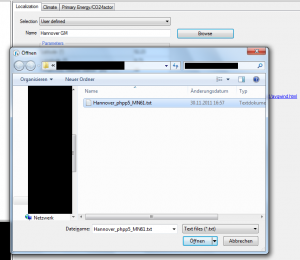
WUFI Passive's standart climate is the german reference climate as in DIN 4108-6 but we will use a different climate, in our case it will be from Hannover. To input a new climate dataset select the "user defined" scope and press the browse button. After you input some valid data, the climate tab will show some graphs about temperature and radiation.
Remember that WUFI®Passive needs a special format of climate files which you can see it in the previous link or in this movie.
If you dont have any climate files formated this way, you can switch to WUFI®Plus and input the climate file there. Detailed instructions can be found here.
Step Two: Building geometry
There are 3 ways to define a building in WUFI®Passive, the easiest one being the building wizard for very simple buildings or spaces. The two other ways are verticles and Sketchup, which work way better if you want to build a more complex building.
For our example we will use a simple room with an unheated attic and a slab on grade zone.
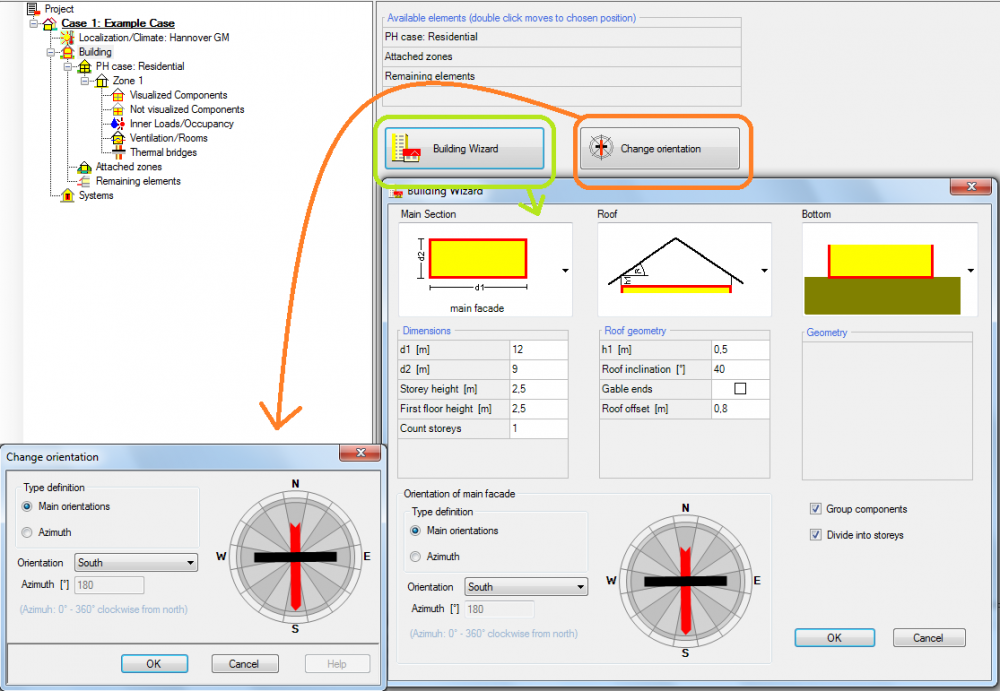
We will add 4 windows on the south side using the visualization box in the bottom left corner. Click the orange boxed "Windows/openings" button and a new page will appear. Here click the green boxed button "Edit List" and insert the windows as seen in the picture.
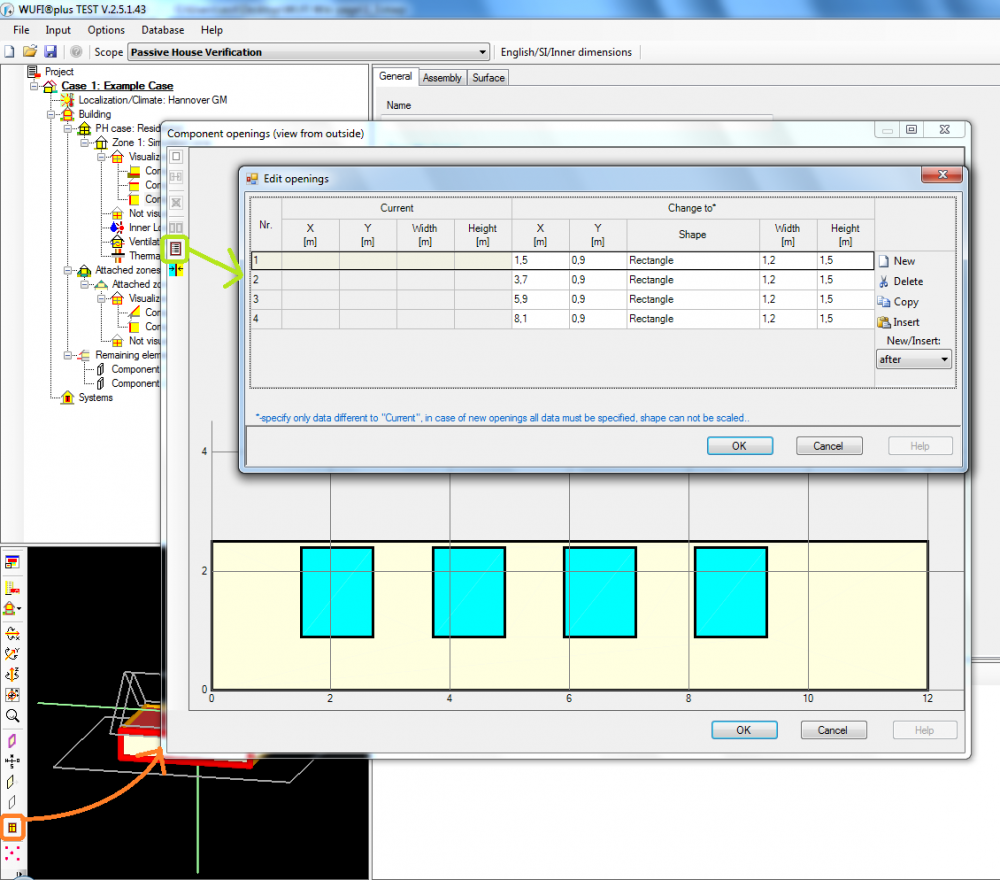
Be aware that the coordinate system of the chosen wall starts in the bottom left and the X’ – axis is the orientation of the window in horizontal direction and the Y’ – axis in vertical direction.
There is also a movie about this topic.
The door in the north orientet wall can be implemented almost the same way. Turn the building in the visualization box, create a "window" just like before and afterwards right click the new element and change its properties to opaque.
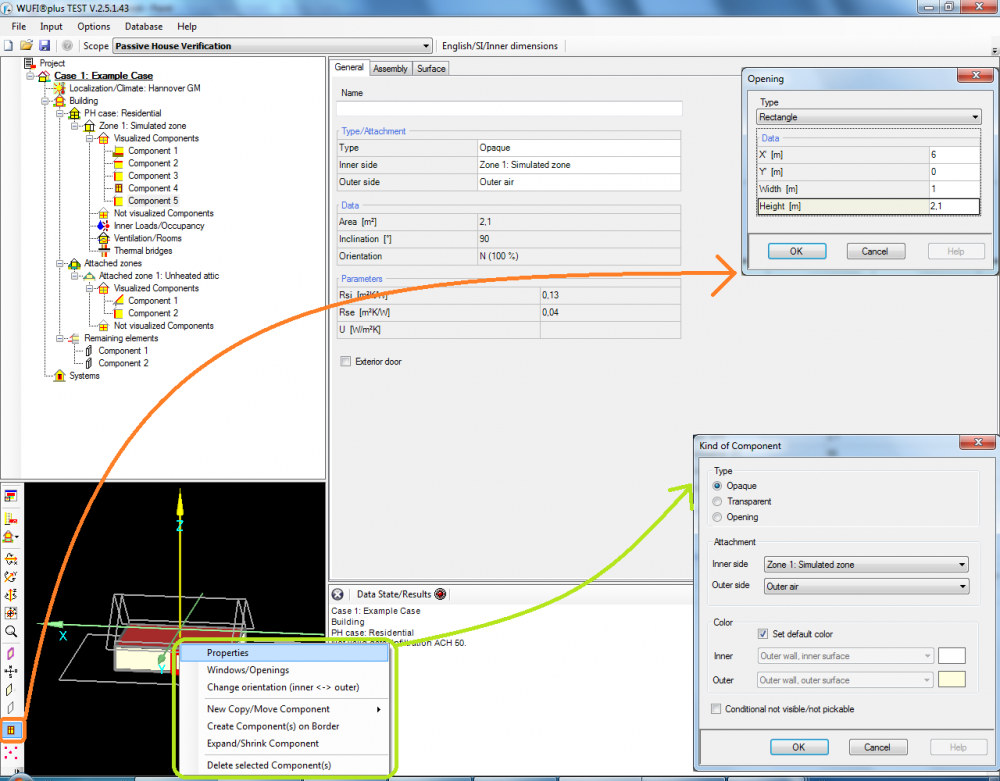
To clarify this is an exterior door, click on "Component 5" in the tree (if you are looking at the door in the visualization box, it will be red edged) and make a check on the "exterior door" option.
Step Three: Options for the passive house
Next click on the "PH case:" section on the tree. Per default its value is "residential" and we will not change something in the "general" tab here. Instead we will go to "Additional data" and input the values being boxed blue in the picture.
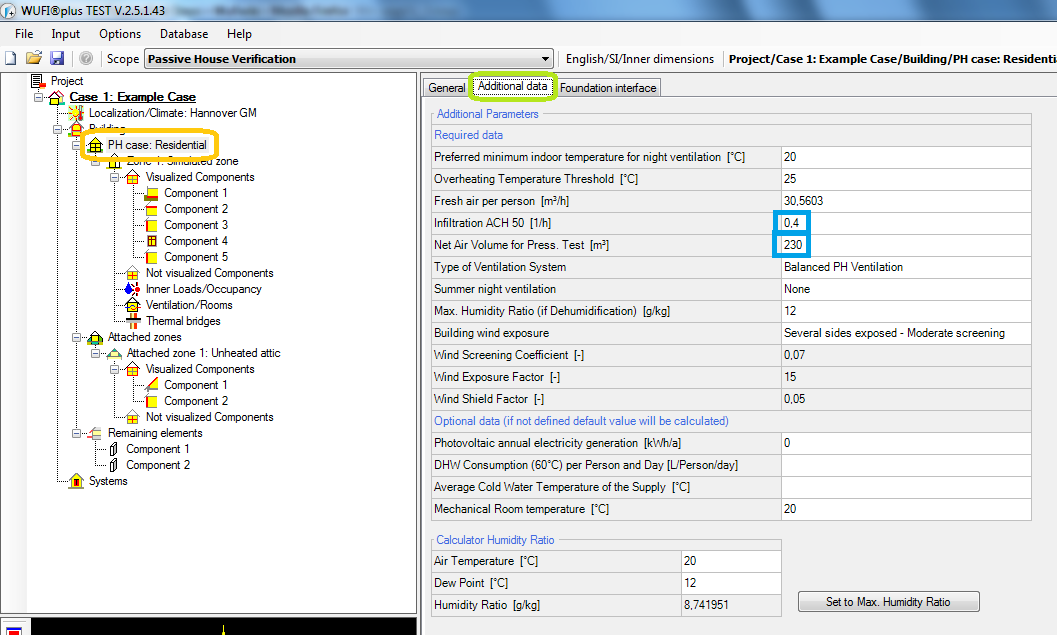
Other than that we will not change any standart values but instead are going to the next section: "Foundation interface". There we will also just add some additional values.
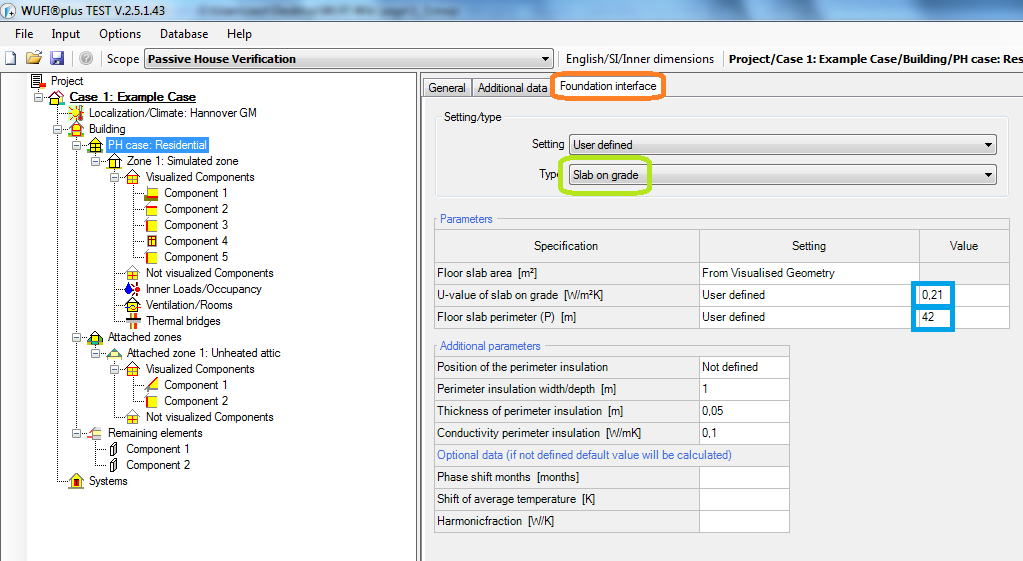
Step Four: Zonal data
In this section we will define the tfa and the gross volume of our building. In the green box we define the properties of our wall, in this case our wall is massive.
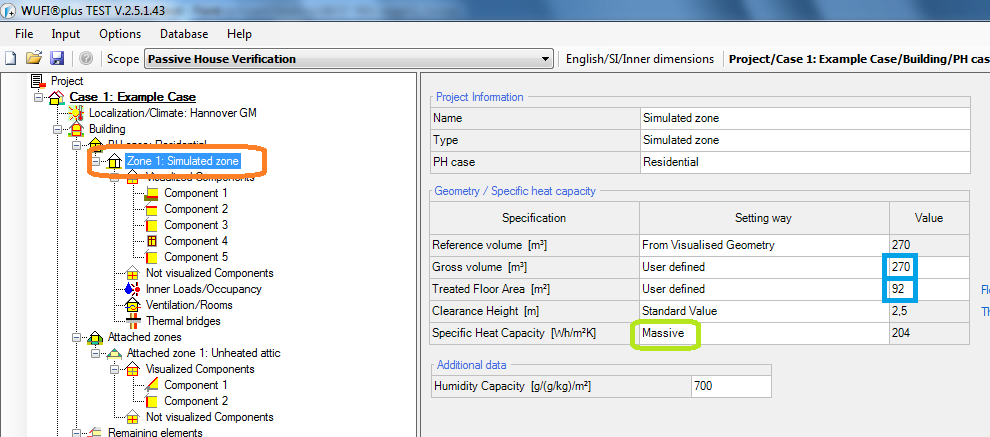
Step Five: Defining the components

The next subsection is all about the components and their assemblies. First we click on "Visualized components" and name each component.
Then we define the assemblies of all components and we will start with the exterior wall as described in this movie.
Therefor we click on "Component 3:ext. wall" and then on the subsection "assembly" and then on the red circled "Edit" button.
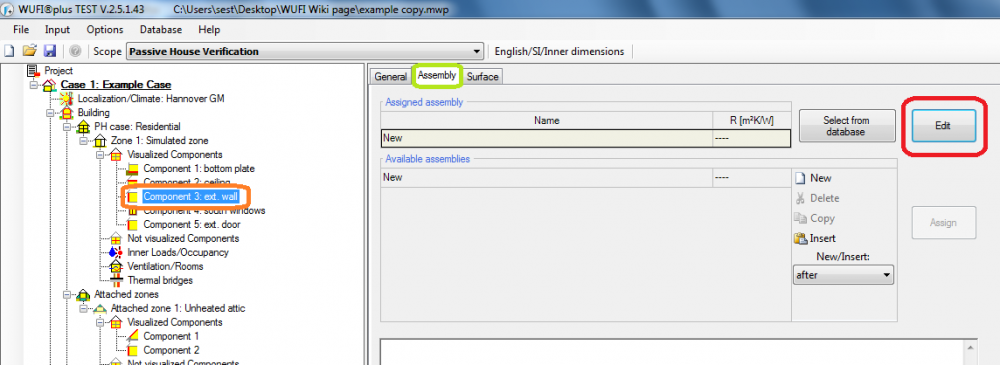
A new window will pop-up, where you can define the assembly. As seen in the video, we will construct a rear wall with wooden beams in it.
First we will name our assembly and then search for our needed materials by clicking on "New".
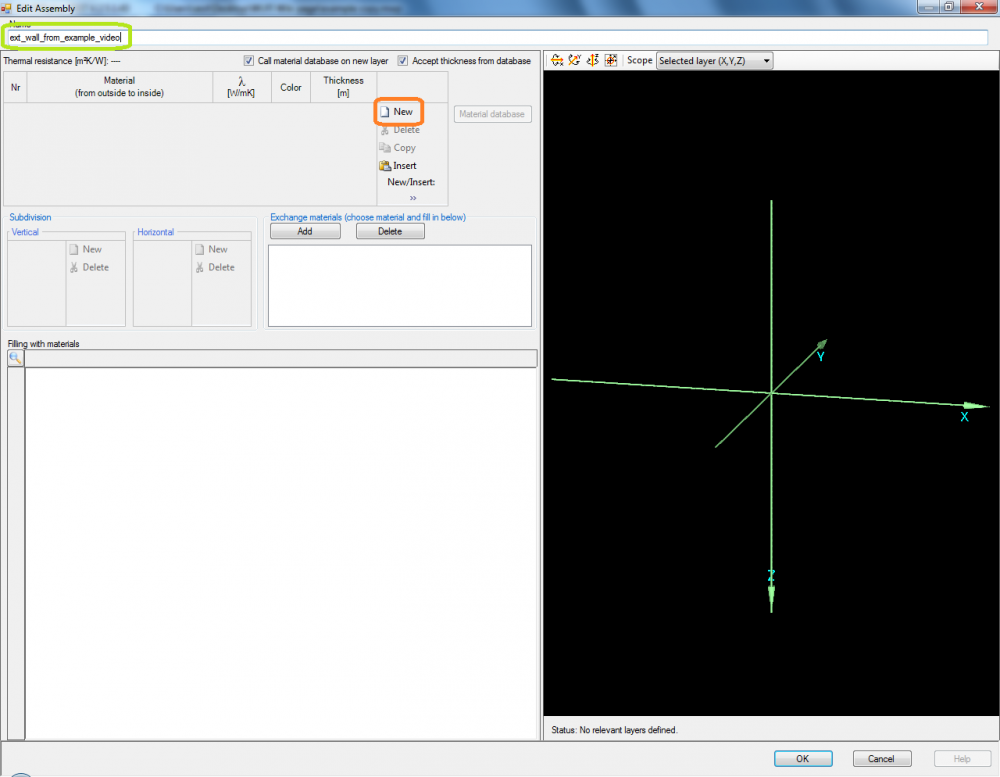
In the material database we will chose the "Wooden materials;Boards" section and define the first layer of our wall.
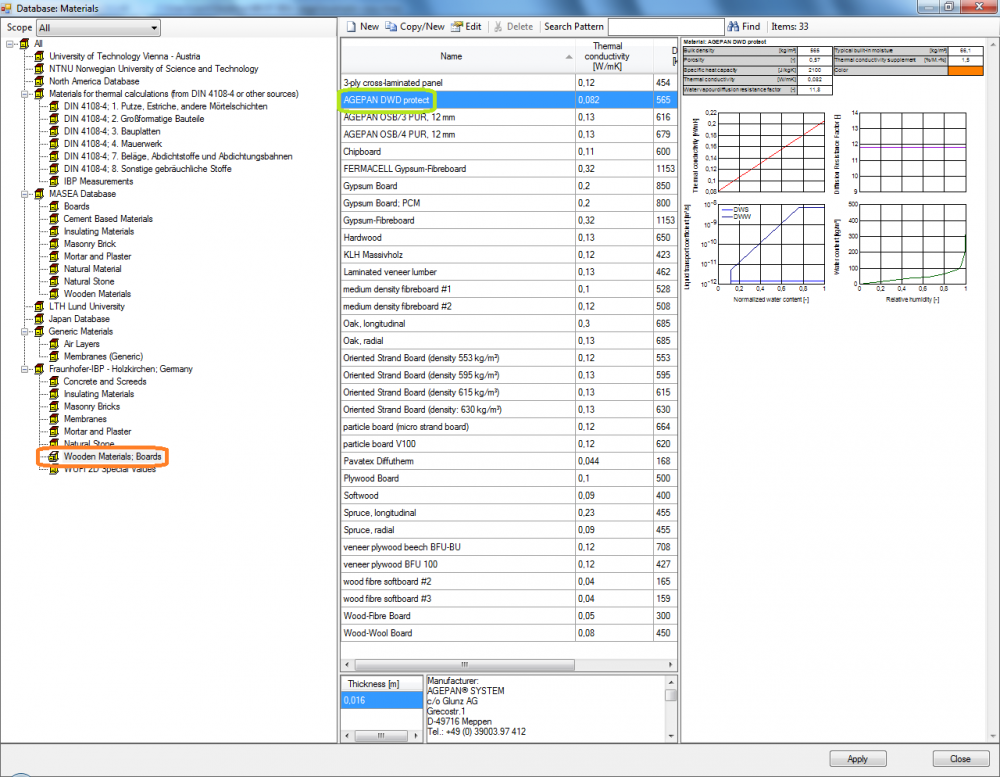
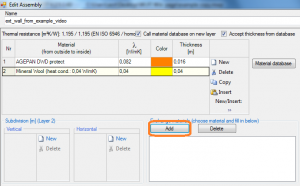
The next layer then will be an insulation material. In this layer are the interupting beams, so click on the "Add" button and you will get to the material database again. Select your beam material (in this case it is "Spruce, radial", which you can find in the "Wooden materials;Boards" section) and then the raster of the timber beams by creating new sections in the horizontal section. Then click on the spruce in the "exchange materials" box and click on the respective section as seen in the picture below.
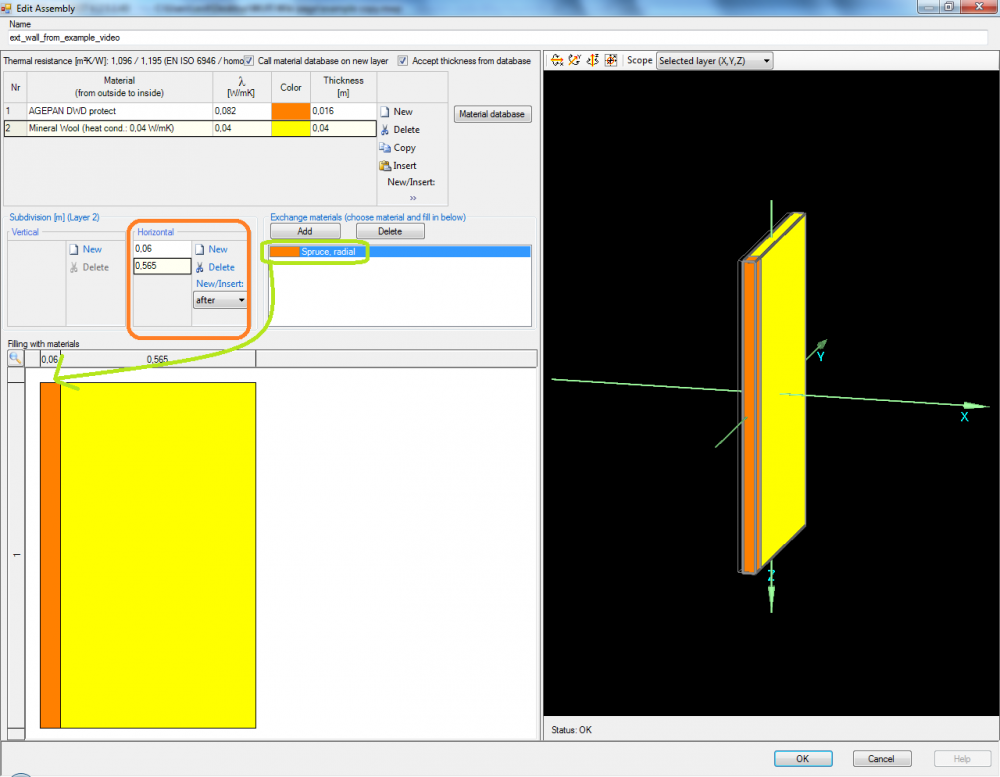
Define then the remaining layers so that the assembly consists of following materials:
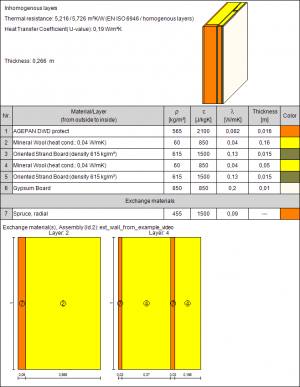
| Material | λ | Thickness |
| AGEPAN DWD protect | 0,082 | 0,016 |
| Mineral Wool (heat cond.: 0,04 W/mK) | 0,04 | 0,05 |
| Oriented Strand Board (density 615 kg/m³) | 0,13 | 0,015 m |
| Mineral Wool (heat cond.: 0,04 W/mK) | 0,04 | 0,05 |
| Oriented Strand Board (density 615 kg/m³) | 0,13 | 0,015 m |
| Gypsum Board | 0,2 | 0,01 |
In the second layer of mineral wool more wooden beams are inserted. This time add three horizontal divisions with the dimensions 0,03 , 0,37 and 0,03. Fill in the spruce in both small gaps.
Back in the WUFI window, you have to assign the assembly to the respective component. The assign button is right beneath the edit button we used before.
You can also use predefined or save your own assemblies here or by clicking the "Select from database" button right next to the "Edit" button we used earlier. This comes in handy, if you want to use the same assembly at different projects.
Now it is time to define the other components as well;
| Ceiling | Bottom Plate | Exterior Door | |||||||||
| Material | λ | Thickness | Material | λ | Thickness | Material | λ | Thickness | |||
| Mineral Wool (heat cond.: 0,04 W/mK) | 0,04 | 0,3 | PVC Roof Membrane | 0,16 | 0,001 | EPS (heat cond.: 0.04 W/mK - density: 30kg/m³) | 0,04 | 0,05 | |||
| Concrete, w/c=0.5 | 1,6 | 0,1 | EPS (heat cond.: 0.04 W/mK - density: 30kg/m³) | 0,04 | 0,25 | ||||||
| Concrete, w/c=0.5 | 1,6 | 0,2 |
Windows
For this example, a predefined window is used. More about implementing windows and their settings can be seen in this video.
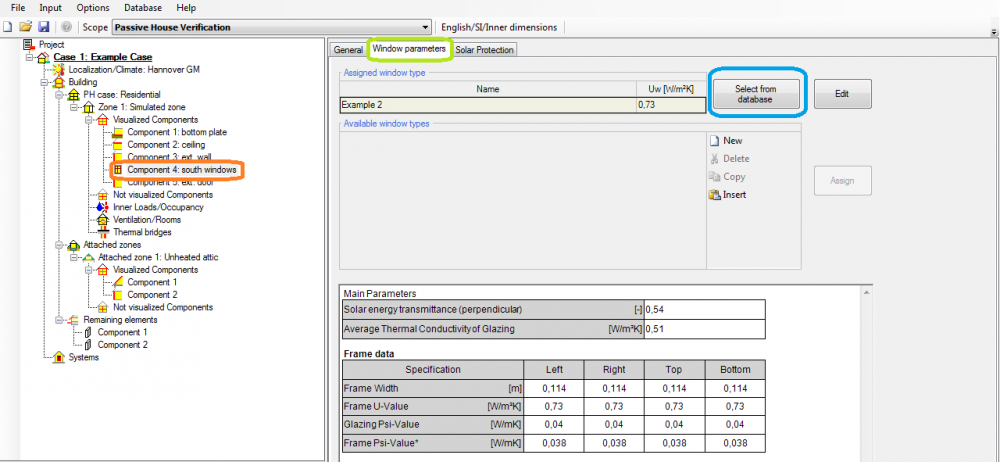
The example 2 windows are predefined windows from the WUFI®Passive database and easy to find.


